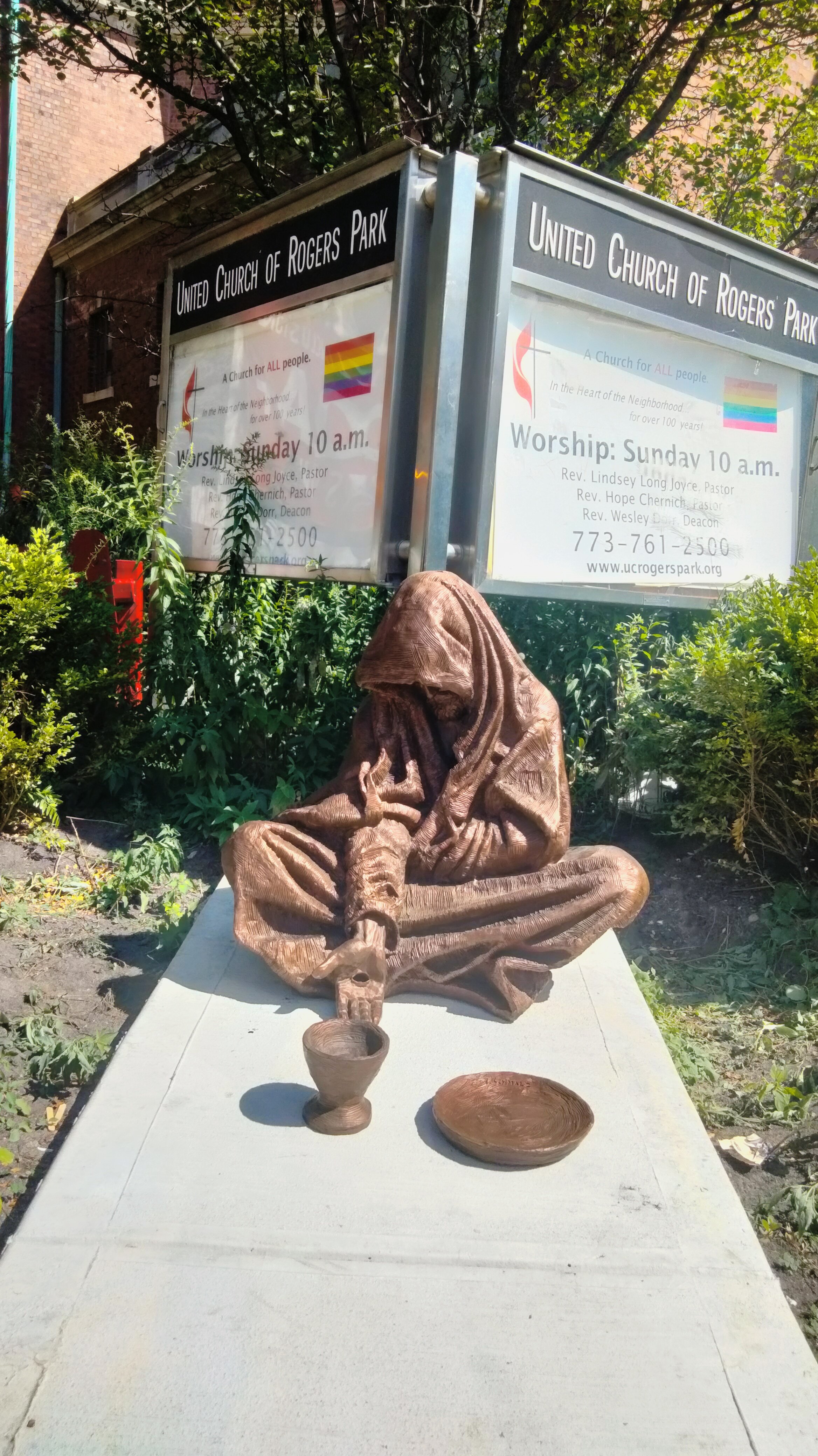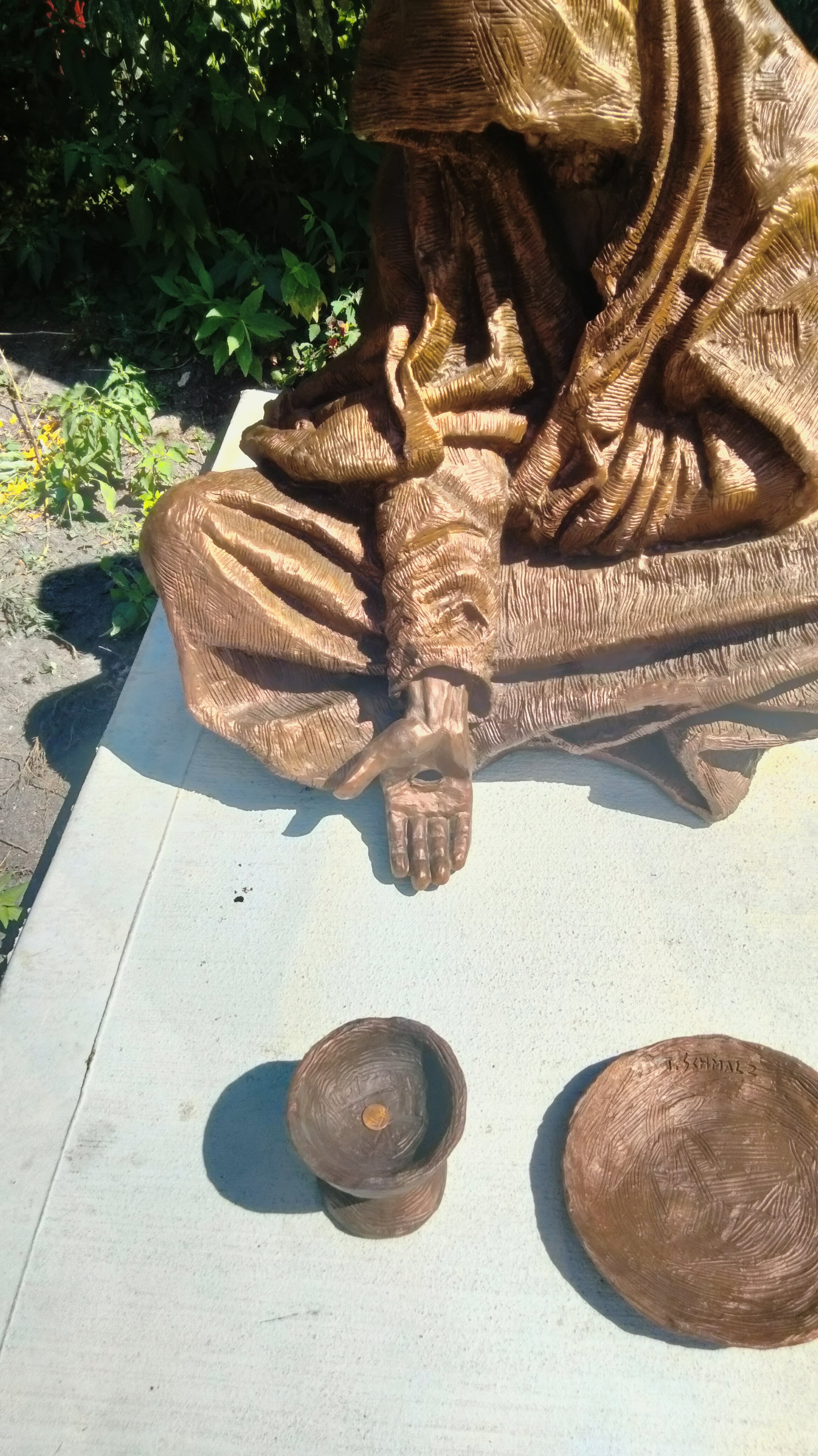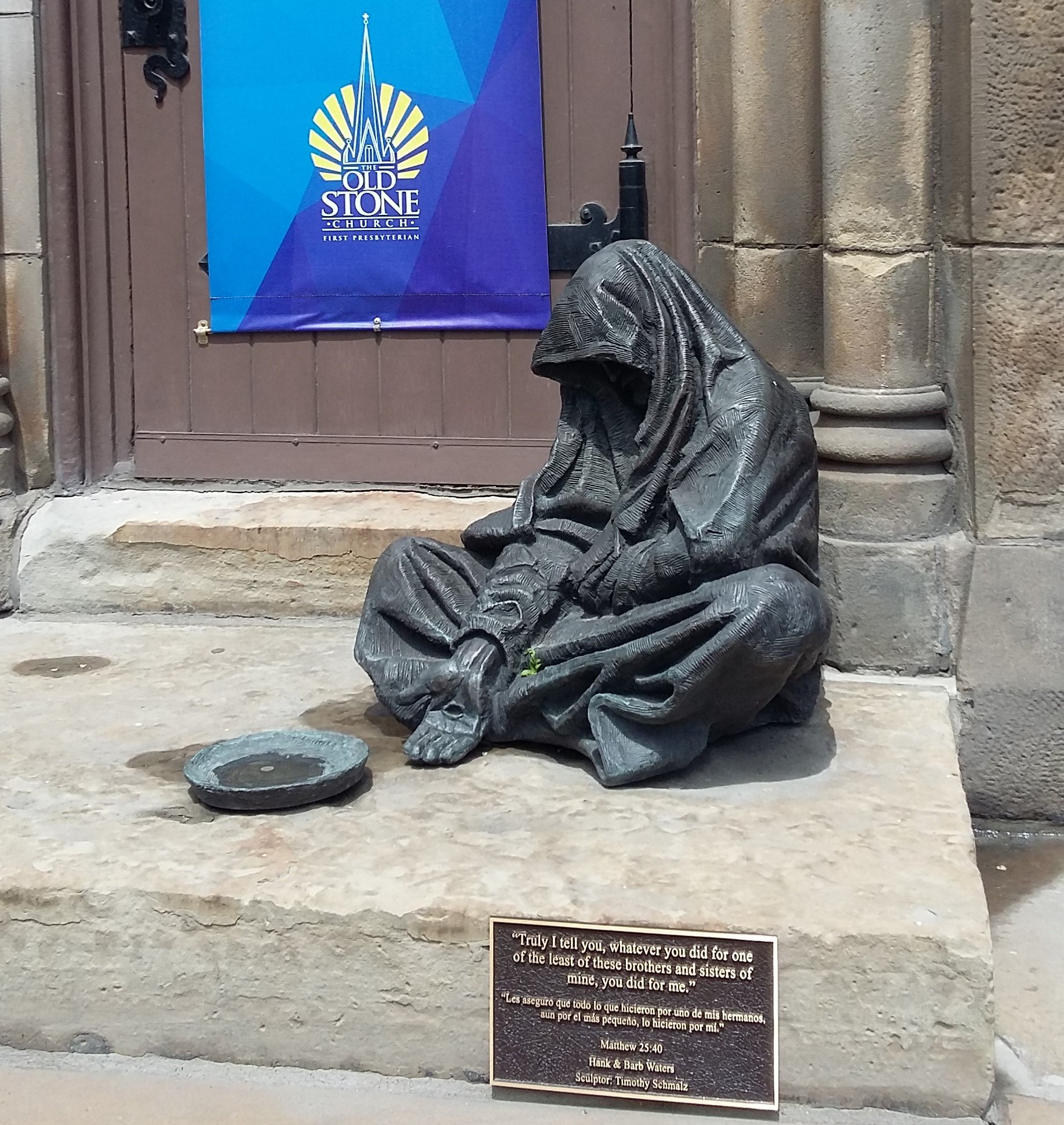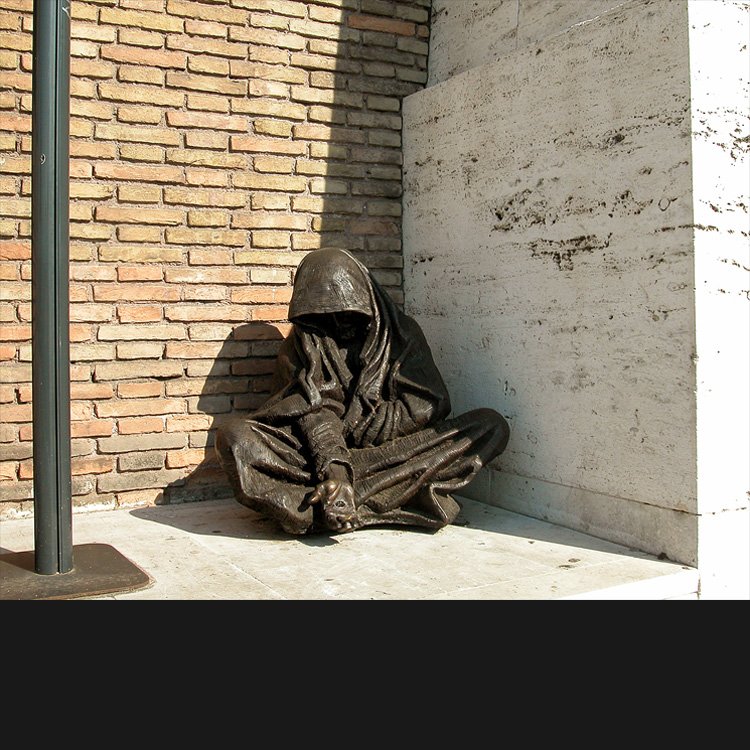Statue shows the gravity of UCRP’s mission
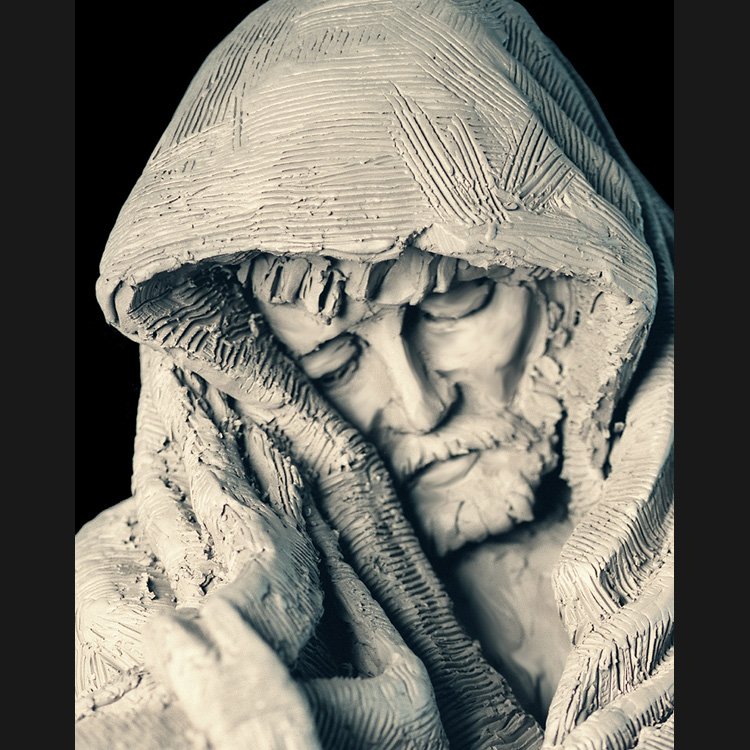
For I was hungry and you gave me something to eat,
I was thirsty and you gave me something to drink,
I was a stranger and you invited me in.
Matthew 25:35
On the corner of Ashland and Morse, UCRP displays Timothy P. Schmalz statue “When I Was Hungry & Thirsty.” It was acquired by donations from the Peace Garden.
This beautiful sculpture is at ground level that can be seen clearly at eye level exhibits what may be a homeless person begging with their cup out for money. At a closer look at their extended hand, there is a bodily wound. Looking closer at the face under the hood shows a bearded male face either tired or weary, or in a deep thought. In either way, it is worn.
Other than viewing the sculpture as an unhoused person, the sculpture can be viewed as Jesus sitting on the corner offering communion to all those who pass by the corner. “When I Was Hungry and Thirsty” portrays the desperation and hopelessness that those who are starving experience for nourishment in body and soul.
Inspired by the Gospel of Matthew 25:40, this sculpture brings to light UCRP’s mission of helping those that need a helping hand in Chicago’s Rogers Park area. It tells us that we need to see Christ in the poor and the hungry, and that we should see our acts of kindness to them as kindness to Jesus.
Sadly, there are many people who fall through the cracks of society’s support systems. Many of these supports are too little to fully deal with the issue. UCRP tries its best with the help of the Rogers Park community with our programs like our Community Feast. This feast has been served every Sunday afternoon since 1984 - not one Sunday has been missed. There is also with Northside Transformative Care For Real a pop-up pantry every Tuesdays and Thursdays.
This sculpture is displayed elsewhere around the world:
Downtown Cleveland’s Old Stone Church
[First Presbyterian Church of Cleveland, is the oldest building on Public Square]
It is also displayed at Santo Spirito Hospital in Rome
[the oldest hospital in Europe].
This hospital was opened after Pope Innocent III decided to create a place of care for unwanted babies and the very sick.
In the picture on the right show, the sculpture in an out of way corner next to the main entrance. It is right above the white vehicle.
The picture just below show how it is just right of the main enterway tucked in a corner where an unhoused person may be founded.
Today, hospitals are the mark of every advanced society. But back in 12th-century Rome the idea of an institution designed to host the sick was a pioneering concept. Early versions of “emergency rooms” had existed for a long time, but no structure was dedicated solely to the care and hosting of the sick and the vulnerable. The artist was so moved after learning about the history of this hopital, he met with the hospital administrator and show hime his scrulpture. “It was meant to be, he loved the work and wanted it placed on the steps of the entrance where it is still located today.
One may also have seen a smaller version of this sculpture in UCRP Church Office’ desk.
St. Francis Church on 31st Street in Manhattan
Salvation Army headquarters in Toronto, Canada
About the artist
Timothy P. Schmalz
For over 25 years, Timothy has been sculpting large scale sculptures. He is a figurative artist with his pieces installed worldwide. Some of his most reputed pieces are installed in historical churches in Rome and at the Vatican. Timothy describes his most important work as visual translations of the Bible. Although most of his work is based upon a spiritual theme, he also creates large, complex public sculptures in bronze. Some of these include monuments that honour veterans and firefighters. Timothy strives to create epic artwork that connects with viewers through design and details that not only touch the viewer on an emotional level, but also allow them to feel somewhat a ‘part’ of the piece.
